Human Health Effects
Overview of
Health Effects
What the
chemicals actually do
Statistics
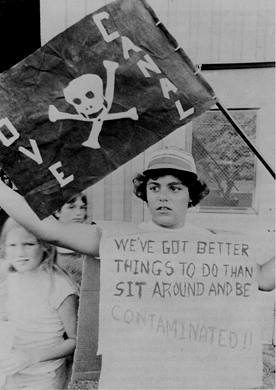
Hazardous waste has been
linked with many horrible health related problems (Regenstein, 1982; Levine,
1982; Wildavsky & Schleicher, 1995). The evidence of this link
can be seen in increased rates of respiratory problems, skin disorders,
miscarriages, birth defects, neurological disorders and cancer clusters
in areas near to hazardous waste sites. Larry Wilson (in Bradford
& Gwynne, 1995) describes an small area where there are 15-20 houses
where he can only name 2 that do not have one of the above listed problems.
He lives in Appalachian Kentucky near a leather tanning company that polluted
the river near his home where many people get there drinking water.
The EPA has developed a method to distinguish the "carcinogenic potency
factor" of chemicals often found in Superfund sites (Wildavsky & Schleicher,
1995). There are four categories:
-
Group A-Human carcinogen. Sufficient evidence
from epidemiological studies to support a causal association between exposure
and cancer in humans.
-
Group B1-Probably human carcinogen. Limited
evidence of carcinogenicity in humans from epidemiological studies.
-
Group B2-Probable human carcinogen. Sufficient
evidence of carcinogenicity in animals; inadequate evidence of carcinogenicity
in humans.
-
Group C-Possible human carcinogen. Limited
evidence of carcinogenicity in animals.
(quoted from Wildavsky & Schleicher,
1995, pp 168-169)
What do
the chemicals actually do?
The chemicals
from hazardous waste sites leach into the ground, air and water. Sometime,
they can even be stored in buildings and get into the cinder blocks.
When these cinder blocks start to deteriorate, the dust that is formed
gets into the air and can easily be breathed in. The same thing can
happen chemicals in the ground although there is also a high risk of getting
chemical burns from touching the contaminated soil. In the water,
the chemicals can be consumed or absorbed just as they can in the air.
With so many pathways into the body its not surprising that they eventually
cause problems in our systems.
These chemicals are often
considered to be carcinogens. Carcinogens work by causing mutations
in your cells, DNA, and chromosomes (Wildavsky & Schleicher,
1995) . When exposed to chemicals, slight changes in the DNA sequence
can change.
DNA is made up of four types
of proteins or nucleotides. The order that these nucleotides are
in tell the cell which proteins and enzymes to make. If the order
of these nucleotides change, the directions for the enzyme will be wrong
and the wrong enzyme will be produced or maybe no enzyme will be produced
at all. In cancers, the cells multiple rapidly when they should not,
forming tumors. These tumors are made up of unspecialized cells (meaning
that they do not really have a purpose). Usually cells have mechanism
to stop growth including contact inhibition where cells do not continue
to multiply when in contact with other cells. Cancer cells do not
do this ("Cancer", Infoplease.com, 2001).
Below are images of cancer
cells during one day of growth.
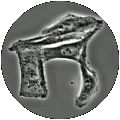
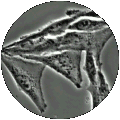
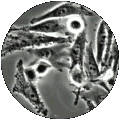
12:00 A.M. 1 cell
2:00 P.M. 85 cells
11:10 P.M. 140 cells
http://www.cellsalive.com/cam1.htm
11/28/2001
The other health problems linked to hazardous waste
sites may cause damage similar ways. They may damage the DNA so that
improper or no enzyme is produced that is needed for a specific process.
Furthermore, actual cell damage can occur during chemical burns or metal
poisoning can occurr. In this type of damage, usually the cell dies.
Receptor cells in the eyes can especially be effected by heavy metals because
of their interaction with the central nervous system as Larry Wilson suspects
has happened to his son (in Bradford & Gwynne,
1995).
The action that is being taken
now to prevent these types of health effects are explain on the Current
Superfund page.
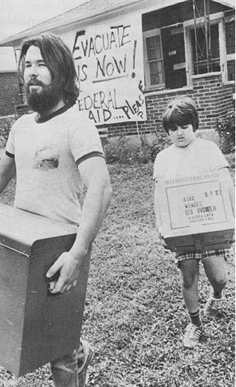
Statistics of Occurrences of Health
Related Problems linked to Toxic Waste
Love Canal
-
Miscarriage rates 50% (in mid 1960's) (Levine, 1982)
-
unusually high numbers of
-newborn deformities
-blood disease
-cancer
-epilepsy
-hyperactivity (Regenstein, 1982)
-
29.4% miscarriage rate (1978)
-
5 of 24 children born in the area had birth defects
-
Only 2 normal children were born of the 17 pregnancies (1979)
-
On 96th Street, of 15 homes
-8 people had developed cancer in last 12 years (at time of study)
-6 women had a cancerous breast removed
-1 man had throat cancer
-1 man had bladder cancer
-a 7 year old boy had convulsions and died of kidney failure
-a dog developed cancerous tumors and was put down
-
One home had been occupied by four families over 15 years of them:
First Family
-wife had nervous breakdown, hysterectomy due to uterine bleeding
Second Family
-husband had nervous breakdown
-wife had hysterectomy due to uterine cancer
-daughter developed epilepsy
-son developed asthma
Third Family
-wife had nervous breakdown
-both children suffered from bronchitis
Fourth Family
-wife had severe headaches, hysterectomy due to uterine bleeding and pre-malignent
growth. They lived there less than 2 years.
Many symptoms of other occurring problems including hearing loss and
skin disorder, improved greatly or "cured" after individuals left the area.
Navajo lands (uranium mines)
-
38 of 150 Navajo people who worked in mines to obtain materials that
would later become toxic suffered from lung cancer (1980)
-
miscarriages, bone, bladder, and reproductive cancers and leukemia all
increased at the same site.
-
birth defect rate is 2-8 times higher than the national average
Toone, Tennessee (contaminated well water)
-
complaints of dizziness, nausea liver and urinary tract problems
-
birth defects including a baby who was born with its stomach on the outside
of its body
(All above information from Regenstein, 1982 unless
otherwise noted)
Though this site focuses on the effects of the toxic waste on humans but
obviously, the environment and ecosystem is effected as well. The
information on this seems to be less complete but Levine (1982) describes
how the land covering the dump became sparse and scrubby. Nilak Butler
and Winona LaDuke (1995) describe how their Mohawk Indian land has been
completely polluted by toxic wastes. The St. Lawrence River that
runs through Mohawk territory is completely poisoned including poisoning
the fish which they relied upon for food. The Hudson River that runs
through New York is the largest Superfund site in the country. The
parts of the river that run near and through New York City were thought
to not be able to support either plant or animal life during the 1970's-1980's
(Miller, 1995). Larry Wilson (1995) describes the purple-brown color
of the stream near his home that he was told was safe to use to water his
farm animals. In ninety days 36 hogs, 13 dairy goats, 7 cows, 200
chickens, some rabbits and other animals were all dead. The water
was contaminated with leather tanning chemicals. So it is clear that
human health is not the only thing at stake with these hazardous and toxic
waste sites. In order to try to limit the damage, the Superfund is
still in use. The current Superfund information can be found here.
Home History
Health Current
Superfund Resources
and Involvement References
Created on 12/01/2001
by Karen Danis


